|
|
|
| |
| ABSTRACT |
|
The primary purpose of this research was to compare the impact characteristics of Taekwondo (TKD) and Yongmudo (YMD) player’s turning kick according to the target height. 5 highly skilled YMD and 5 TKD players participated in this study. To measure the impact force, two accelerometers were fixed to a PVC pipe in a sandbag. Each participant performed 10 turning kicks trunk and face height in random order. Only the trial with the most accurate (most central impact) measurement was used in the statistical analysis (p < 0.05).There was a significant difference for impact force according to the target height approximately 6400 ± 898 N, 6393 ± 1382 N for the mid section and 5419 ± 659 N, 5475 ± 1293 N for the high section of TKD and YMD groups, but not between groups. The swing phase for the TKD group was significantly shorter than the YMD group’s. The TKD groups’ recovery phase of the trunk height turning kick was significantly shorter. There was a difference in the players’ center of mass (COM) movement as the TKD players’ moved significantly more forward, suggesting that the TKD players tended to slide towards the target during the execution of the kick. In conclusion, as the turning kick was performed quicker by the TKD players with a similar impact force and more forward motion, it is evaluated to be a better technique of turning kicking. |
| Key words:
Turning kick, impact force, Taekwondo, Yongmudo
|
Key
Points
- This impact force measuring device had a significantly smaller standard deviation then that of impact force measuring devices.
- There was a significant difference between the impact forces according to the height approximately 6400 ± 898N, 6393 ± 1382N for the mid section and 5419 ± 659N, 5475 ± 1293N for the high section of TKD and YMD groups.
- The turning kick was performed quicker by the TKD players with a similar impact force and more forward motion.
|
Taekwondo (TKD) is a Korean martial art form that was originally taught for warfare, self-defense and physical fitness. In competition Taekwondo, points are scored when contact to the torso or head produces a ‘trembling shock’ (WTF rule book). With the opponent required to produce a ‘trembling shock’ for the acknowledgement of points, there have been many injuries caused (Zemper and Pieter, 1989). As a direct result of these high number of injuries chest protection and head protection are now required for participation in Kyorugi. With this in mind the evaluation of chest gear and head protection must be considered. Yongmudo (YMD) is a martial art that has been developed by Yong-In University professors and it was created by combining and modifying the techniques of Taekwondo, Hapkido, Judo, Fencing and Ssireum (Lee et al., 2002). It is considered a third generation martial art; first generation being one of action, second generation of mental endurance and the third generation a combination of the two generations. With the purpose of YMD as being an overall self defense system the turning kick was slightly modified so that as to be able to use proceeding techniques. According to Sidthilaw, 1996, the impact forces recorded for a beginner Muai Thai Kickboxer’s roundhouse kick are estimated to be 6702 ± 3514 N, 7240 ± 3477 N and 5618 ± 3253 N for low, medium and head target height respectively. In terms of body weight this is approximately 10BW, 12 BW and 8BW for low, medium and head target heights. For the estimation of force, 3 one dimensional 50g accelerometers were fixed perpendicularly inside a bowling ball, which was then placed in a sand bag. In another related research (Chiu et al., 2007), the kicking force of the roundhouse and back kick and the speed of the kicking foot were measured. Chiu et al., 2007) used a different method to measure the kicking force, an air bag was fixed to a wall and the difference in air pressure caused by the force of the kick was measured. The roundhouse kick and back kick force measured at 8252 ± 720 N and 8023 ± 836N. The kicking forces of various kicks were measured by a force transducer and they ranged from 2759 to 9711.9 N (Gray, 1979). Even with these other studies (Chiu et al., 2007; Gray, 1979; Sidthilaw, 1996) related to the forces created by martial artists it is believed that the results in these studies could be improved by reviewing other researchers’ designs and modify them. With the purpose of the Yongmudo and Taekwondo turning kick being slightly different, the YMD technique has been modified for this. Taekwondo players tend to use a more snapping motion so as to be able to prepare them for another attack using their legs whereas the Yongmudo players follow many of the turning kicks with other attacks using various methods i.e. punch, grappling etc. It was therefore deemed that a comparison between the impact forces of these two styles could be used as a comparison between the technique of kicking with a snap (TKD) and a swing (YMD). ParticipantsFive Yongmudo and Taekwondo players were recruited through Yongin University. Each of these participants has over 10 years experience in various martial arts and were asked to complete a medical history form and a consent form (TKD: mass 66.9 ± 6.1 kg, height 1.74 ± 0.03 m, leg length 0.92 ± 0.03 m YMD: mass 71.5 ± 6.5 kg, height 1.75 ± 0.02 m, leg length 0.91 ± 0.02 m). Participants suffering from serious musculoskeletal injury within the last two years were excluded.
Data collectionThe experimental equipment used were 7 vicon cameras, two 3D accelerometers and two AMTI force platforms. The 7 Vicon cameras (MX 13) were used to record the kinematical data at a 150Hz and all data was processed and filtered by the Woltring filter (Woltring, 1986) at 15 Hz. Two PCB 356A15 tri-axial 50g limit accelerometers measured the acceleration of the PVC pipe located in the sandbag. These accelerometers were fixed onto a PVC pipe by the wedging and gluing the accelerometers to a wooden panel which was screwed into position at both ends of the PVC (Figure 1). To calibrate the accelerometers, punching bag was dropped from several varying heights onto the AMTI force platform. The acceleration outputs from the accelerometer and the force platform was recorded at 1500 Hz and compared. There were many trials performed however due to the sensitivity of the accelerometers only the reliable data was used to calibrate the system for estimation of the kicking force (Figure 2). A value of Pearson’s correlation coefficient r= 0.914 was recorded and it was deemed to be adequate. In relevant research r = 0.978 was obtained (Sidthilaw, 1996). The kicking force was estimated by entering the accelerometers acceleration value into the Equation 1 below.
Experimental procedureThe participants were encouraged to warm up after signature of the consent forms. The warm up consisted of 10 jumping jacks and light stretching of the following muscles, quadriceps, biceps femoris, soleus, gastrocnemius, external abdominal obliques, lumbar, erector spinae and the muscles surrounding these. Each of the stretches were held statically for 10 seconds. In total the warm up took approximately 10 minutes. After this warm up, each of the participants was instructed to perform the roundhouse kick twenty times in total. Ten kicks were done at trunk height and ten kicks were done at approximately head height. This process was randomly rearranged. Each kick had to be done efficiently according to the following conditions; correct height, appropriate direction and balance, etc. Both the kinetic and kinematic data were exported from Workstation©, Polygon© and imported into Microsoft Excel to generate the necessary graphs and results. The ground reaction forces (GRFs), acceleration of the pipe in the punching bag, the motion of the center of mass (COM) of the participants, the range of motion (ROM) and angular velocity for each of the involved joints, hip and knee, kicking foot speed and phase times were all analyzed.
Statistical analysisTo perform the statistical analysis all the most accurate data (data with the most central impact) were exported into SPSS 12.0. For each of the groups the kick height, the mean and standard deviations were calculated. Two way ANOVA with repeated measures were used to investigate statistical difference with significance set at p < 0.05.
Terminology
The average results for the testing variables of each group the varying conditions are shown in Table 1. There was no significant difference between the group and condition for the normalized GRF, hip and knee joint ROM and angular velocity, and the COM lateral and vertical movement. There were significant differences for the estimated kicking force for the mid section and for the high section of TKD and YMD groups. To determine the differences in the impact force and turning kick motion according to the kick height, peak impact force, maximum velocity of kicking foot, GRF of the kicking foot, hip’s rotating ROM and angular velocity, knee’s flexion/extension ROM and angular velocity and the participant’s center of mass movement were calculated by Vicon’s program workstation. As hypothesized, there is a significant difference between peak impact forces according to the height of the target. There was a difference between some of the preceding research related with the measurement of kicking forces, ranging approximately from 2759 to 14,000 N (Chiu et al., 2007; Gray, 1979; Sidthilaw, 1996). Whether this difference is due to the degree of skill of the participants or due to the instrumentation used is ambiguous. Some factors that could influence the impact force developed by the roundhouse kick include skill level, body mass specifically the leg, kicking technique/ posture, and stiffness of the kicking leg, etc. As other researchers used different methods to measure the impact forces, the difference in results is due the compounding effect of the both the difference in participants and the difference in measuring systems. The results of the other researches validate our data as they give similar results. In the case of Chui et al. (2007), their method possibly gives higher impact force because the air pressure bag is fixed against the wall and thus absorbing all the force. In Sidthilaw’s study (1996) as there was only one accelerometer used, there was high probability of the participant kicking the sandbag off-center and thus measuring inaccurately. As a direct result of this the within subjects trials for the same height the standard deviation was approximately 50%. In this study the standard deviation was reduced to 14% as two 3D accelerometers were fixed to the ends of a PVC pipe which likewise was place in a sandbag. This reduction could be interpreted as an improvement in the measurement of impact forces. Also with such large forces, approx. 5500~7500 N, it was recommended to participants that safety equipment should definitely be used during Kyorugi. As for the difference of motion of the turning kick there was a larger rotation of the pelvis for the TKD group. The speed swing and recovery phases were shorter for the TKD group. In conclusion, the turning kick’s impact force was approx. 6400N and 5447N for midsection and high section turning kick. The turning kick was performed quicker by the TKD players with a similar impact force with more forward motion. Also, the TKD players tended to slide in towards the target more than the YMD players. Surprisingly, there was no significant difference between the two groups’ knee flexion/extension angular velocity which was expected to be higher for the Taekwondo group due to the importance of the snapping motion emphasized by all coaches and instructors alike.
| ACKNOWLEDGEMENTS |
Firstly, I would like to express my gratitude to my professors for helping me prepare and thoroughly correcting this article. I also must thank the Professors at Yongin University for allowing me to perform this study in their well equipped laboratory. This work was supported by the Korea Science and Engineering Foundation (KOSEF) grant funded by the Korea government(MOST) (No. R11-2007-028-02001-0). |
|
| AUTHOR BIOGRAPHY |
|
 |
David O’Sullivan |
| Employment: Seoul National University, Seoul, Korea. |
| Degree: BA, BAI, MSc, PhD candidate |
| Research interests: Physical mechanisms involved with kicking, injury prevention and sports apparel and equipment. |
| E-mail: tkdnutter@yahoo.com |
| |
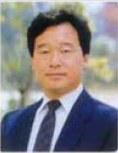 |
Chulsoo Chung |
| Employment: Professor, Department of Physical Education, Seoul National University, Seoul, Korea. |
| Degree: PhD |
| Research interests: Optimization of movements and the design of sports equipment. |
| E-mail: isshin@snu.ac.kr |
| |
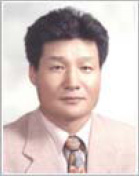 |
Kikwang Lee |
| Employment: Professor, Department of Physical Education Seoul National University, Seoul, Korea. |
| Degree: PhD |
| Research interests: Analysis of Sports Technique. |
| E-mail: cschung@snu.ac.kr |
| |
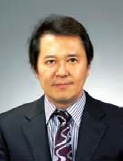 |
Euihwan Kim |
| Employment: Associate Professor, Department of Sports Science Koomin University, Seoul, Korea. |
| Degree: PhD |
| Research interests: Sports biomechanics, footwear biomechanics, Sports medicine. |
| E-mail: kklee@kookmin.ac.kr |
| |
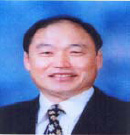 |
Sungchul Kang |
| Employment: Professor, Department of Martial Arts, Yongin University. |
| Degree: PhD |
| Research interests: Motion analysis, sports technique. |
| E-mail: judo4828@hotmail.com |
| |
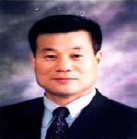 |
Taewhan Kim |
| Employment: Professor, Department of Martial Arts, Yongin University. |
| Degree: PhD |
| Research interests: Taekwondo. |
| E-mail: schulkang@hanmail.net |
| |
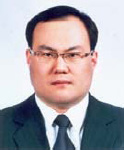 |
Insik Shin |
| Employment: Professor, Department of Martial Arts, Yongin University. |
| Degree: PhD |
| Research interests: Gait analysis (obesity, normal), injury prevention and sports apparel and equipment. |
| E-mail: burumi75@yahoo.com |
| |
|
| |
| REFERENCES |
 Chiu P.H., Wang H.H., Chen Y.C. (2007) Designing a measurement system for Taekwondo training. XXI ISB Congress, July 1-5, Taipei, Taiwan. Journal of Biomechanics 40, S619-. |
 Choi C.S. (2004) A comparative study of the impact forces on target distance and punching types during Taekwondo punching motions. Seoul National University. |
 Gray L. (1979) Force and impact determinations of certain karate kicks. Journal of Biomechanics 12, 636-637. |
 Lee S.C., Kim E.Y., Kim E.Y., Han C.H. (2002) A study on how to practice Yongmoo-do for completing guard duty. Institute of Martial Arts, Yongin University 13, 1-9. |
 Min K. (2008) . Rules for Yongmudo - an all- around martial arts competition. |
 Sidthilaw S. (1996) Kinetic and kinematic analysis of Thai boxing roundhouse kicks. Oregon State University. |
 Woltring H.J. (1986) A FORTRAN package for generalized, cross-validity spline smoothing and differentiation. Advanced Engineering Software 8, 104-113. |
 Yang C.S. (2001) A comparison of kinematics of Taekwondo and Hapkido Dollyuchagi Motion. Korean Journal of Sports Biomechanics 10, 157-164. |
 Zemper E.D., Pieter W. (1989) International Institute for Sport and Human Performance. Injury rates during the 1988 U.S. Olympic team trials for Taekwondo. University of Oregon. |
|
| |
|
|
|
|

